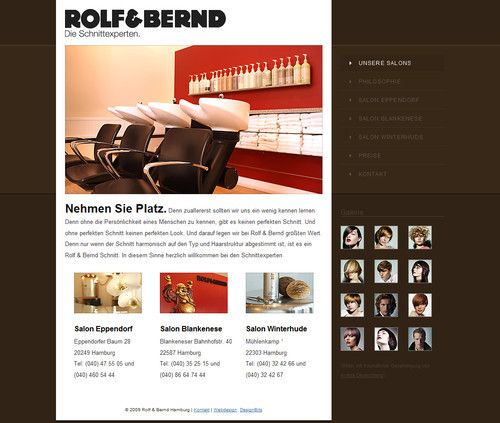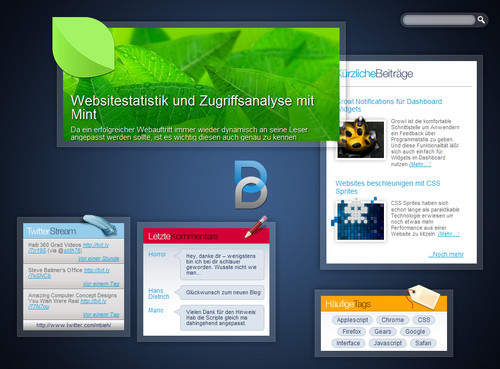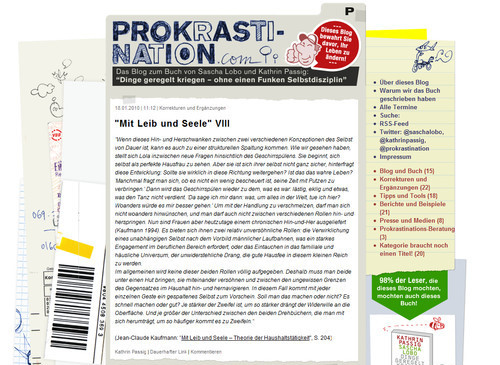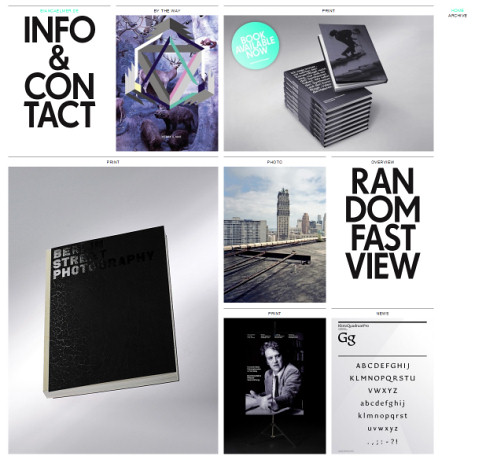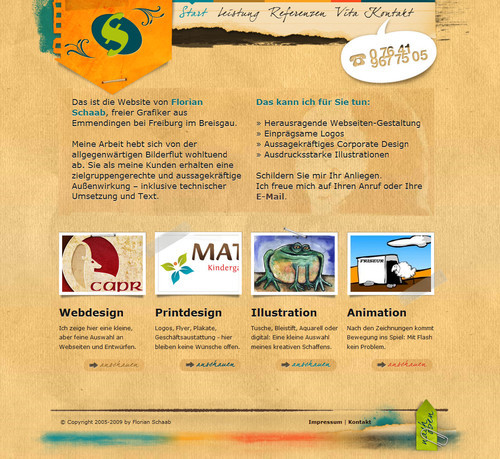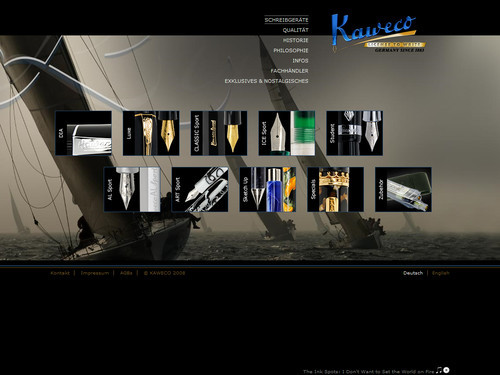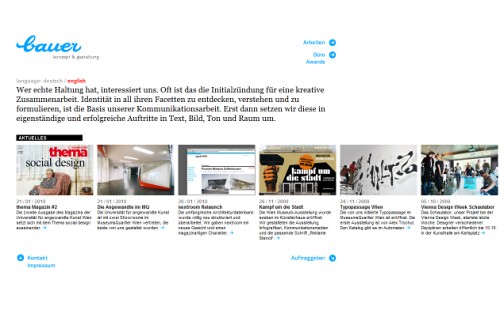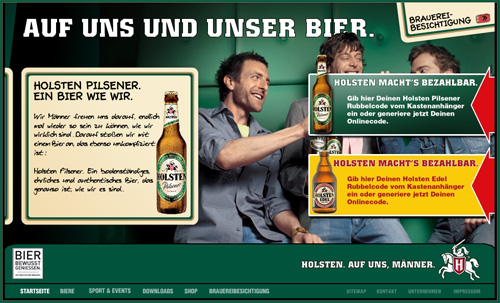Showcase Of Web Design In Germany
German design is certainly worthy of respect and a delight to the eye of anyone who takes the time to observe it. For years, we have accumulated knowledge, upheld eternal principles of style, simplicity and accessibility, adopted best practices and kept up with the latest global trends. I’m proud to present here a showcase and discussion of world-class German Web design.
State Of Things
The creative industry in Germany is extremely competitive and consists of thousands of freelancers, studios and agencies. We have the pleasure here of presenting a brief interview with several German design gurus to lend some insight into the local design scene. As talented creative professionals, blog and book authors and freelancers, they are passionate about sharing their knowledge with others. Our participants are:
- Prof. Fons Matthias Hickmann, graphic designer, typographer, Professor of communication design at the University of the Arts Berlin, Director of Fons Hickmann m23 design studio, author of “Beyond Graphic Design” and “Touch Me There” books;
- Mike John Otto, founder and Creative Director of blackbeltmonkey design studio;
- Kai Becker, Creative Director at Elephant Seven agency;
- Christian Bartsch, Associate Creative Director at Neue Digitale / Razorfish agency;
- Dirk Ollmann, freelance Creative Director;
- Markus Angermeier, design freelancer;
- Björn Seibert, Web designer, information architect, founder of the Webzeugkoffer blog, and author of the book “Professionelles Webdesign mit (X)HTML und CSS”;
- Dirk Behlau, graphic designer and photographer.
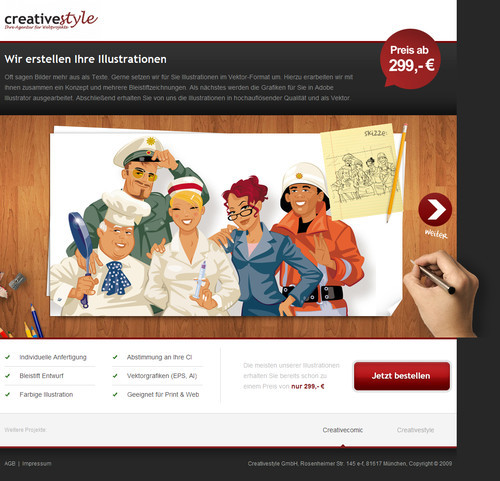
Question: Could you please describe the current state of the German design market. What is the life of a freelancer, developer or designer in Germany like? How much do designers earn?
Prof. Fons Matthias Hickmann: Working with interesting and open-minded people is not something you can take for granted. And earning money by doing what you love involves luck.
Mike John Otto: The current situation for good designers, developers and especially freelancers is surprisingly good. That strange year 2009 wasn’t as bad as many thought it would be, and there was a big demand for good creatives with experience to help realize projects at agencies. As many bigger agencies reduced their team sizes, freelancers were highly welcome, and I honestly think that shrinking in such a “crisis” always benefits the quality of creative projects, because people try harder to prove themselves with good work instead of just doing their job.
Kai Becker: I think 2009 has been a hard year for designers. Although we had a lot of work (compared to conventional advertising agencies), many clients cut their budgets, which often meant less time for the design process. I also missed jobs in which the design or idea played a leading role. Briefings were very conservative or half-hearted and often came with a very reduced budget. A screen designer earns around €2000 to 2800; from there on you’d be an Art Director. Most of them earn €2900 to 4000, but a few earn a bit higher. Freelance screen designers earn in the range of €150 to 250 per day, Freelance art directors get from €300 to 500. Because conventional agencies had to sack quite a few designers, a lot more freelancers have been available in 2009, and as far as I know they have had a hard time.
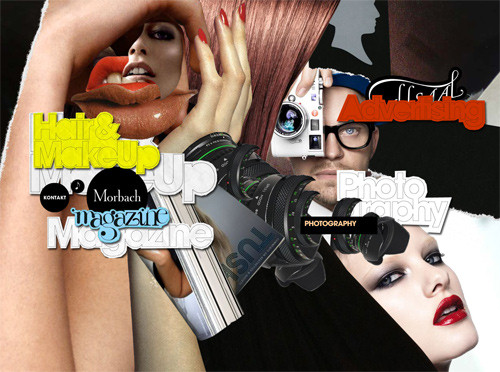
Christian Bartsch: I think we have the perfect market right now for small studios and freelancers. All the big agencies tried to build up knowledge of digital services in the past five years to be more integrated. Those that failed now have to to work with specialists and independent freelance networks to be competitive. Clients want their 360° communication, and you need professionals for that. A lot of these professionals, including myself, can be found on Design made in Germany, a platform for German designers. Money-wise, I would say it is the same as everywhere else. If you are good, you’ll be booked.
Dirk Ollmann: The financial crisis had a strong impact on the freelance market. I know a lot of them were starving and sleeping under the bridges in Hamburg. Just joking. Life is not that bad, but agencies tried to manage all of their work with their own staff, and so hiring freelancers was a no-go for the last two years. Now the market is rising again, and the fact that agencies were very cautious and kept their staff counts low will now help freelancers. An art director can earn between €300 and 500 a day, depending on his skills, quality and speed.
Björn Seibert: Web designers and developers are working — surprise, surprise — as freelancers and employees. Freelancers work more on interdisciplinary projects and teams. The employees work in small specialized agencies, in bigger full-service agencies and large industry enterprises. I would guess the majority work for small to mid-sized businesses. But overall, I don’t think that this is particular to the German market.
Working as a Web designer or developer is rarely a 9:00 to 5:00 job. Your income depends of whether you work as a freelancer or employee. Secondly, it depends on whether you work for a small agency or large enterprise. It may also depend on education. Employees can earn from €35,000 up to 50,000 or even more. As a freelancer, it depends on your market, target groups and customers. As a freelancer, you can and should ask for an hourly rate of at least €50 and up.

Dirk Behlau: Hmm… I have been working as a freelance graphic designer and photographer for ten years now, and I have been lucky enough to develop Pixeleye Interactive (my business) from year to year. I mainly work for international lifestyle, car and custom-bike magazines and top brands. For example, I was in Mexico with the Finnish rock band Leningrad Cowboys in the fall of 2009; we will produce a photo book and DVD documentary together. All I mean to say with this example is that I am not sitting in my office every day from 9:00 to 5:00. I travel a lot, meet cool people and a lot of new things happen. So no day is like another, which keeps me motivated. How much do designers earn? That depends on how “established” you are in the business… I have all I want and can make a good living out of it.
Question: Are there any patterns of usability or rules of thumb that are typical of German design? Are the standards of Web design in Germany changing?
Prof. Fons Matthias Hickmann: Although the Web is completely different from print or anything else we thought we knew, you can still apply your principles and tastes to Web design. At the moment, almost anything is possible, and that makes it exciting.
Mike John Otto: Well historically, German design has always been really clear and straightforward. On the one hand, everything produced in Germany, including the design, is usually very precise and content-driven. On the other hand, I see a new trend of more experimental designs that try to break out of grids and usability patterns. As globalization hits every one of us, and with one click anyone can see what is highly rated in other countries, German designers are trying to develop something new, a new German design language, as happened on the German music scene before.
A new German aesthetic language that still hasn’t quite developed but will hopefully soon be as strong as the German music and art scene is today. The most creative areas in Germany currently are Berlin, Hamburg and the Frankfurt am Main area. A lot of smaller German design and digital studios pop up and do remarkable work far away from daily advertising work, even if the big networks still play a bigger role in the German creative scene than they do in, for example, the UK or Sweden.
Kai Becker: I wouldn’t say so. This is a difficult point, but I can’t see anything explicitly “German” in Web design from here. Standards are always changing, but I think that affects Web designers and developers worldwide.
Christian Bartsch: The design culture in Germany is still very young. With the rise of Berlin as one of the hot spots in Europe, German design has taken a big step. We had and still have a lot of influence from Spain and France. If we speak of Web design, Germany always has been competitive in the global market. You will find a lot of German projects on The FWA.
Dirk Ollmann: For me, as a creative director who has worked on a lot on big brands in the car and consumer goods industries, the financial crisis has had a huge effect on marketing strategy and the process and technology of the Web designer. It turns out that the short-term “return on investment” is more important than long-term brand building.
Today, analytics is the driving force in Germany. But what effect has this had on Web design? The trend is “back from Flash to HTML.” This is the technology that works best with Google’s search engine. Actually, the new BMW website design is based on HTML. Last year’s Web designers were expected to have a lot of skill in Flash and inventing new navigation concepts and visualizations. Now, we’re going back to the roots of Internet, keeping it very simple, do everything that Google wants and trying to sell the product with a few clicks. That’s it.
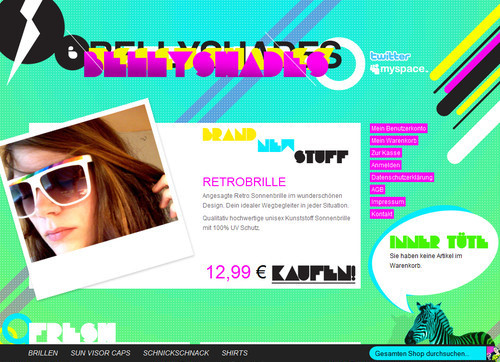
Björn Seibert: First of all, I don’t think there should be a special rule set for a specific national market. We and others are working hard for a common understanding of Web standards, usability and accessibility around the world. There could be derivative or special requirements for special markets or target groups. But there is foremost a strong demand for international and widespread standards by which every designer and developer can build websites and applications of high quality and a high level of user experience.
Spurred by the Web standards movement in the US, and led by “General” Zeldman and his combatants, the Web standards movement accelerated very quickly in Germany as well. Many of us in Germany started thinking about those standards and proposed best practices. In 2005, Jens Grochtdreis founded the Webkrauts. The Webkrauts are working hard on doing awareness training for Web standards and best practices in Web design and development. Their publications help to educate others and point to obstacles.

Question: How important is professional education in the design industry, and do you feel that the education available in Germany is adequate to develop world-class designers?
Prof. Fons Matthias Hickmann: Professional education is very important, and more open-minded and sensible young talents are out there than ever before. I am anxious for them to take over soon.
Mike John Otto: I truly believe that all world-class designers have an innate feel for design but have also learned and shaped their skills at art school and by working in agencies. So yes, a professional education is not only important but essential, and a few very good ones not only teach students creative and software techniques but open their eyes to art, design history, common trends and design rules as well as things like film, theater and marketing. Nowadays, design students who are looking for jobs have to know much more than they did a couple of years ago: about film, conceptual thinking, advertising rules, digital trends such as social media and online campaigns, to name just a few.
These soc-alled “digital natives” have a much wider range of techniques and hardware to mix into their daily work than I had when starting out in the business in 2000. This is a big opportunity and a big pain at the same time. Every good school has to prepare to students to meet this wide new range of market needs.
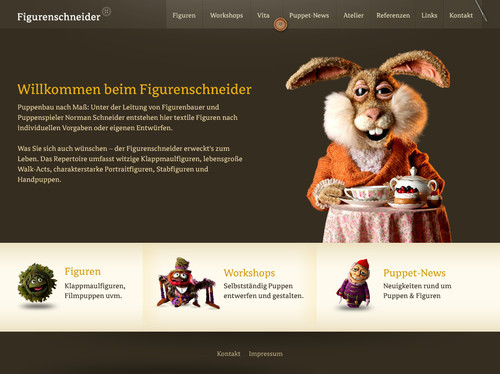
Kai Becker: For advertising agencies, your portfolio matters the most. I judge designers by the work they have done already, not if they have studied the right thing. And yet Burg Giebichenstein in Halle, Germany, is the place that develops world-class online designers. If you can make it there, you’ll make it anywhere.
Christian Bartsch: I think professional education shapes your style and keeps you focused. I experienced big differences in quality at German design schools. After four years, I transferred because I was unsatisfied with the conditions at my school. Design is evolving. Multi-touch and augmented reality offer new ways to approach content. Interfaces are becoming more and more complex. Some schools still think in paper.
Dirk Ollmann: Of course, a professional education is essential. It speeds up your talent. But learning your craft is only one aspect. You should also use your university or design school to meet people and network. World-class designers? Of course there is enough room for them in Germany. Have a look at the biggest multi-touch wall made by Sensory Minds!
Björn Seibert: This topic was the subject of my latest article for the German “Webstandards Magazin” (Issue 4⁄2009). And yes, I think there is a need for more professionalism in terms of education and orientation for job starters in the field of Web design and development. Indeed, we are seeing a bit of action with apprenticeship; people who study digital media and design have the opportunity to do some specialization. But so far, there is no special degree course or job training that fully concentrates on educating Web designers and developers. In my opinion, there is still a lot of work to do in offering more professional education and better safeguards to hopeful professionals — safeguard that would keep people from thinking that any Web design job could easily be done by their neighbor’s son.
Dirk Behlau: Nowadays, getting a good education is becoming more and more important for someone to be successful in the design field. There are a lot of good people out there. I started 15 years ago as a full auto-didact, developing my own style and look. Designers coming from university are often very impractical in normal “office life.” They may have learned how to use programs like Photoshop, but they don’t have the experience to be successful in their business. Self-marketing and self-promotion are very important, and these are not taught very well in universities.
Question: Where do you get inspiration from? How do you stay informed about the latest design trends? What books and magazines do you read?
Prof. Fons Matthias Hickmann: Like almost everybody I speak to about inspiration, I feel overwhelmed by the amount of information we process every day from the Web. A few websites are clever and thoughtful, giving insight into the creation and process of design, rather than just showing random pictures. Where do I get my inspiration from? From every form of culture. And from daily life. The Web now plays a part in both.
Mike John Otto: I get my inspiration from a mixture of influences: Hamburg and Berlin’s night scenes, youth culture and their dress and music codes, travelling, music magazines and my daily work with colleagues and students from my class. Of course, I check out design websites such as The FWA, Digital Arts, as well as magazines such as PAGE and IdN, but I don’t get inspired by checking out other design work. True inspiration comes from fields such as music, theatre and story-telling. Sometimes new ideas are born of these influences, and sometimes one kind of recycles all of this stuff and creates something new from it.

Dirk Ollmann: Before you design, you need an idea. I think this is the most difficult thing. A lot of designers use the Internet to try to come up with a unique idea, but that’s the last place to find it. I try to keep my eyes open for things that happen in real life… keep my eyes open and record. After a while, you have a database of ideas waiting for implementation. Stop working, get inspired! Ideas will come by doing something completely different. Try something! I use to pet my cat, kite-surf, play bass, etc. Nevertheless, there are some websites I check regularly: Behance for random searching (those are some cool guys from Eastern Europe); for style, The Cool Hunter is one of my favourite websites; and The FWA for state-of-the-art Flash design.
Björn Seibert: A normal day starts with Google Reader and the Twitter timeline. These are my main sources of information for keeping up to date on Web design trends and issues. Actually, I’m subscribed to about 230 feeds, mostly covering design, Web design and development, usability and user experience topics. Further, I’m subscribed to some Posterous blogs. I love to discover small new unknown blogs with good and relevant copywriting. For me, inspiration is nothing you go out looking for. It starts with good content, smart insight into Web design issues and smart solutions to common problems. I read a lot of Web design-related books. Lately: Sexy Web Design, Designing with Web Standards, Integrierte Informationsarchitektur. At the moment, there is only one magazine I’m willing to pay for, the quarterly Webstandards Magazin.

Dirk Behlau: I travel a lot, meet new artists and exchange ideas with them. And I do read a lot of magazines and check websites, blogs, social network websites, etc. So, I do look everywhere, and I’m interested in a wide range of themes from movies, music, video games, travel, lifestyle, hot-rodding, custom culture, skateboarding, custom bikes, graffiti, tattoos, to name just a few. I do get a lot of magazines from around the world every month, covering everything from cars to tattoos to music. I love the Juxtapoz and IdN magazines.
*Question: Are there any other issues unique to German Web design? Do you see any remarkable differences in comparing it to creative industries worldwide?
Prof. Fons Matthias Hickmann: One obvious difference is the language. English is omnipresent on the Web, German is big as well. How should we deal with that? Is translation a good method, or an alternative? How will our culture change? What can we do as designers?
Mike John Otto: Not really. British, US and Swedish influences are big in Germany, and so the product is becoming more and more similar. A German design and Web design language is being formulated more and more but is still not strong enough. Most of the German work seen at award shows and in magazines is still mainstream from a handful of very well-known German agencies. Although German ads and design are winning more and more at award shows: Germany was in the top five in quite a few rankings this year. I hope a remarkable difference will show itself in German design sometime soon.
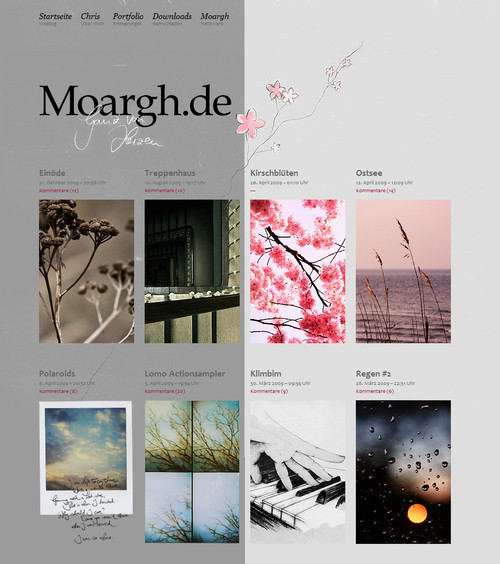
Kai Becker: There may be slight differences between European, Asian and American Web design, but I would not say they are remarkable. Perhaps German Web design is typically straight, clean, simple and tidy. Kind of what you would expect from a German, wouldn’t you? :)
Christian Bartsch: Right now, Flash development is particularly good in Germany. Small studios such as blackbeltmonkeys, Less Rain and Artificial Duck are pushing the limits.
Dirk Ollmann: Germans are often seen as “number crunchers” — that’s absolutely true. The big brands always want to know what the results will be before we do anything, and we try to avoid any mistakes. The result is that we miss a lot of opportunities that the Internet provides. But maybe this is a worldwide problem as well. Styles and trends? I hope German Web designers will kill glossy 3-D buttons, wet-floor shadows and those ’80s trend next year. Website design will evolve into big clear typography, short copy, only a few themes per page, big easy buttons and a lot of video content.
Making videos will become increasingly easy, and we’ll turn away from the high-end glossy advertising grease. Even big brands will host their videos on YouTube or Google Video to allow users to embed. “Sharing” will be the driving force of content and Web design in the coming years. The biggest task of brands will be to conquer social networks like Facebook, MySpace, etc. But most brands have no idea how to achieve this. For me, this is one of the most interesting fields in advertising today.
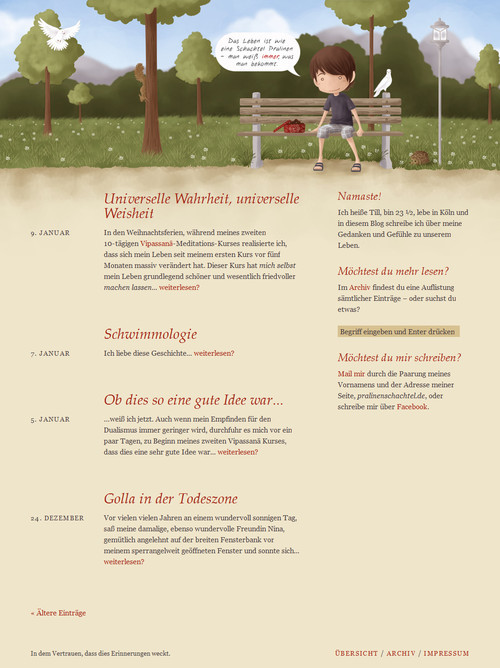
Björn Seibert: I generally have a more global point of view. But what must be emphasized is that a line of German Web design has emerged. There are a bunch of very talented Web designers, and the Web standards movement is upon us, in no small part thanks to the Webkrauts initiative. There is also a highly recommended Web-standards podcast Technikwürze that covers the latest Web design trends and features the best from the Web in Germany. But I think that sometimes we should be more self-confident and share with each other our thoughts about modern Web design and current issues.
Dirk Behlau: That’s difficult to answer because I work for international clients that demand my particular style. Sometimes I think European and American clients are more experimental.
What’s Going On In Germany?
Events
A number of design and tech-related events happen in Germany on regular basis. Some worth mentioning are Forum Mediendesign; Designers’ Open; webinale ; WebTech, DesignCamp (January 24-25, 2009 in Cologne). A famous international arts festival, “Illustrative,” was held this year in Berlin.
- Forum Mediendesign
- Designers’ Open
- Webinale
- webtech conference
- Illustrative
- Design Zoom
- Volkssport Design
Awards
Among the most prestigious awards in the German design industry are the red dot design award, iF communication design award, Designpreis, Gute Gestaltung, Deutscher Multimedia Award (DMMA), BIENE-Award and LeadAward.
Showcase Of Web Design In Germany
In this showcase, we bring you a selection of the most inspiring and well-designed websites in Germany, either personal experimental or corporate.
friseur hamburg - rolf & bernd
Junopilot
 ]
]
pisto - magazin über web und die welt
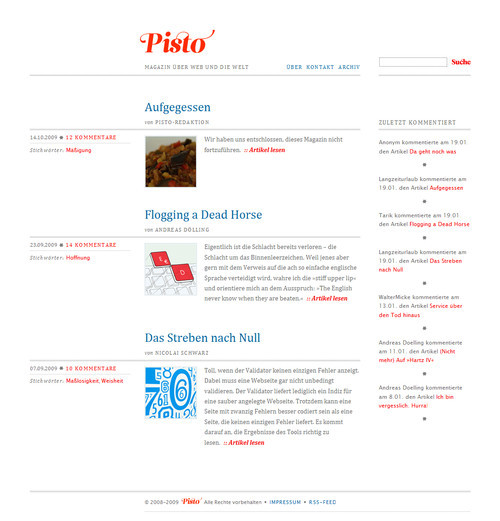 ]
]
erfolgreiche webseiten und marketing-kampagnen aus hamburg
tanner + tailor
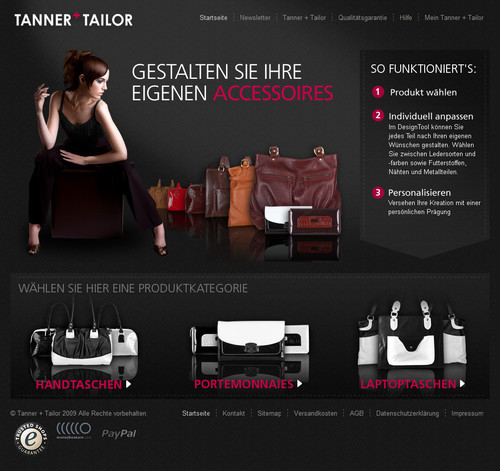 ]
]
oliver twardowski, addicted to coffee
 ]
]
dinge geregelt kriegen - ohne einen funken selbstdisziplin
artcore-illustrations
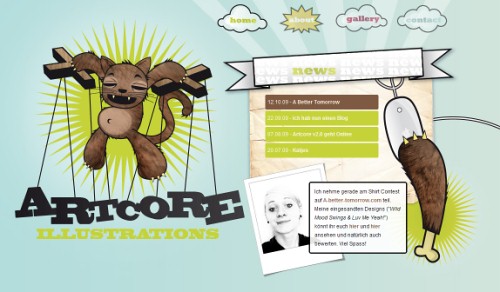
flaek footwear
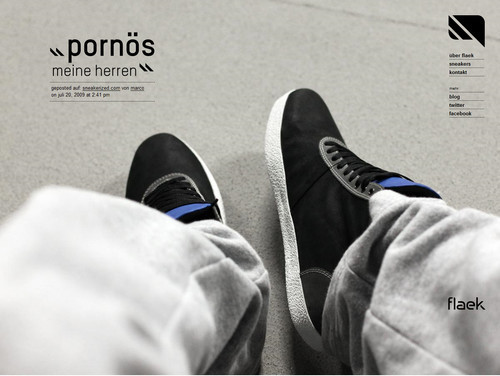 ]
]
kinderspiele, malvorlagen, kindergeburtstag
 ]
]
stefan velthuys - web & frontend-designer
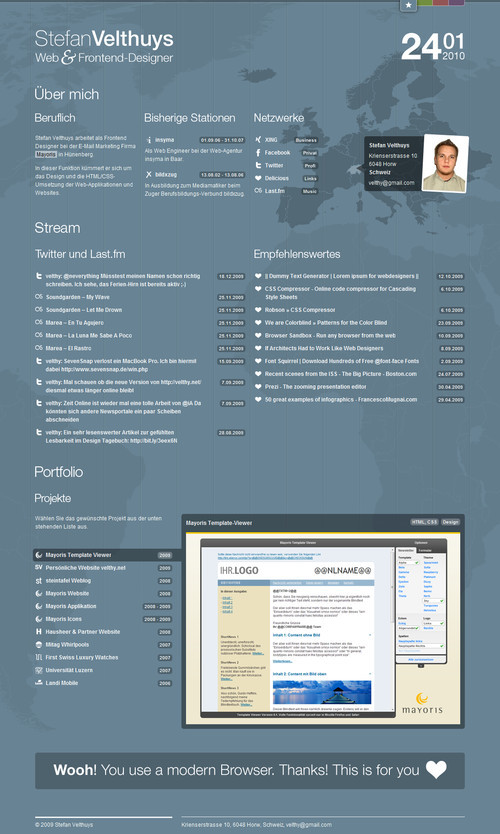
stilvolles webdesign, printdesign, illustration und animation
noel nieto - strassenfussballer

high quality writing instruments
visionpixel mediendesign
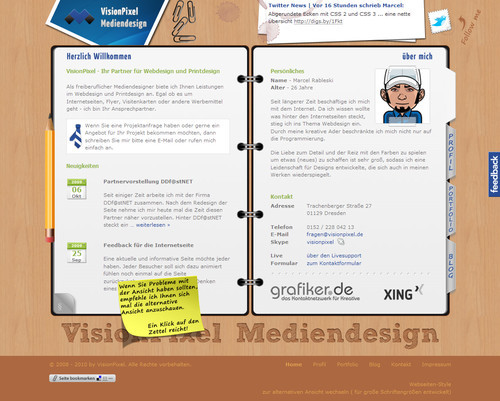 ]
]
NerdFilms
Kubis Welt
]
Julius Brink & Jonas Reckermann
Irrland
]
Lukas Lindemann Rosinski
]
Diet Riot
]
Arthur Schlovsky
Carsten Mell
Santamaria Tour
Quintezzense
Wild Web Woods
]
Mustafas Gemüsekebap
[]
My Lane
]
photocase - kreative stockfotos
misfall - t-shirt
 ]
]
habitat seven - very flexible
 ]
]
cape arcona type foundry

vier für texas *ideenwerk

wm team - showtime for your brand
 ]
]
xplicit ffm / grafik - und webdesign aus frankfurt
Showcase Of Design Agencies
The design sector in Germany is dominated by a number of highly professional creative agencies that have earned international public attention and many prestigious awards: among them the red dot design award, iF communication design award and Designpreis.
Scholz & Volkmer Clients: Mercedes-Benz, Adidas, Samsung, Coca-Cola
recom Clients: Adidas, American Express, Audi, BASF, BMW, Bosch, Braun, Canon, Chevrolet, Citroen,Douglas, Ehrmann, Fiat, Ford, Gerry Weber
Mutabor Clients: Adidas, Audi, BMW, Breuninger, L’Oreal, Nivea, T-Mobile, Volkswagen
Tilt Design Studio
]
Saint Elmo’s Clients: BWM, Lufthansa, AxelSpringer
GNC Design Clients: HTC Deutschland, Ford Deutschland, Renault Nissan Deutschland
Toca Me Clients: Amway, BMW, Burda, Compaq, Fujitsu Siemens, Henkel, L’Oreal, Mc Donalds, Microsoft, MINI, Müller Milch, Novartis, Red Bull, RitterSport, Sony BMG, Vodafone, Xbox
]
hauser lacour Clients: Bayer, Berlin Chemie, Commerzbank, Lufthansa
urbn; Clients: McDonalds, Adidas, Sarotti, Hasseröder, hohes-C, L’Oreal
blackbeltmonkey Clients: Mitsubishi, Edeka, FC Bayern, Chelsea FC
Taobot Clients: Beck’s, Coca-Cola, Commerzbank, Deutsche Bank, GfK Group, Jay-Z, Leica Camera, Mercedes Benz, Metro Group, o2 Deutschland, Smirnoff, Swarovski, ThyssenKrupp, Toblerone
Moccu Clients: L’Oreal, Garnier, Volkswagen, Deutsche Telekom, Vodafone, Dior, Maybelline, WWF, Canon
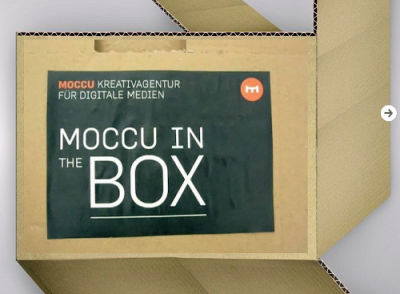
Goldener Westen Clients: Axel Springer, Coca-Cola, Edeka, ZKM Karlsruhe
MetaDesign Clients: Volkswagen, OTTO, Conrad, Audi, Klett Verlag, Lufthansa, Nici, eBay
Aperto Clients: Audi, Bayer, BenQ, Coca-Cola, F.A.Z., Siemens, Sony, Triumph, Volkswagen
Loved Clients: Adidas, Audi, Comdirect, Görtz, s.Oliver
Antwerpes, Clients: Aral, Bayer
]
Are We Designer Clients: BASF, Burda, Deutsche Telecom, Vodafone
Marctropolis Clients: ARD, Beate Uhse, Bild, BMG, Burger King, Chupa Chups, Procter & Gamble, Red Bull, RTL, Siemens, Skoda, Universal Music, ZDF
Parasol Island Clients: MTV, IKEA, Sony Ericsson
Fiftyeight Clients: DHL, Mazda, Milka, Lacoste, Jaguar, RTL, Nintendo Deutschland, Disney, Procter & Gamble, Ferrero Deutschland, Karlsberg, Nike, Renault Germany, Warner Music Germany, Sparkasse, Opel, MTV
Showcase Of Web Design Freelancers
Besides the professional creative agencies, we find a lot of freelancers working in the industry.
United States of Design, Clients: Adidas, Audi, Bacardi, Berliner Sparkasse, Bertelsmann, Coca-Cola, Deutsche Bank, Mini, MTV, Mozilla, Plazes, Sprite, Siemens, Sony, Sony Ericsson, TDK, Volkswagen
]
Martin Anderle Clients: Adidas, BMW, Sony Ericcson, Volvo, ZDF
kosmar Clients: Stiftung Warentest, Daimler, SPD Berlin, Plazes
Dirk Schütze Clients: Leibniz, Konica Minolta, Deutsche Post
Radekal Clients: Gillette, IKEA
mediziehm Clients: Peugeot, Ford, Jaguar
psychosystems
]
chez-boo
]
David Hellmann
C.L.I.T.O.R.I.O.U.S]
]
Round-Up Of German Design Resources
To stay competitive and successful on the creative scene, we have to know what’s happening in the fields of Web design, Web development, graphic design and typography and know what trends are set to become the next big things in the design world.
The round-up below of over 70 design-related resources should give you an overview of German blogs, Web design galleries (both CSS and Flash), communities, social networks and magazines (both online offline). You would be well advised to read or at least occasionally look through these to catch up on the latest design trends and get a daily dose of inspiration and encouragement. I invite you to discover some of these unique and enjoyable resources!
Blogs
- Das Web Design Blog
- Design Tagebuch
- Pixelgraphix
- Webzeugkoffer
- Farbwolke
- Webstandard
- Designer In Action
- Stilpirat
- Pixeleye Daily Design Blog
- Kulturbanause
- Pixey.de
- Designjournal
- Visualblog
- Mediengestalter Blog
- Slanted
- Fontblog
- MyFonts
Web Design Galleries (CSS and Flash)
- CSSArena
- CSS Hamster
- Netzfrühling
- Distinct Styles
- Visueller Orgasmus
- Visual Safe
- Piepmatzel
- Spyline
- PixelEyeGermany
You may be interested in the following related posts from our new series on global Web design:
- Web Design In The Arab World
- Web Design In Poland
- Web Design In The Netherlands
- Web Design In Lithuania
- Web Design In China
- Web Design in Ireland
Your Opinion Is Welcome!
What is your opinion of the German Web design scene? In case we’ve missed any exceptional websites, please share them, and your thoughts, in the comments section. We always look forward to your feedback and support!
Stay Tuned And Get In Touch!
This article is the fourth in our new Global Web Design series. Over the next months, we’ll be covering various continents, featuring Web developers and designs from different countries and looking closely at what is happening on the Web design scene worldwide.
If you’d like to prepare an article for this series, please contact us, and we’ll discuss details.





